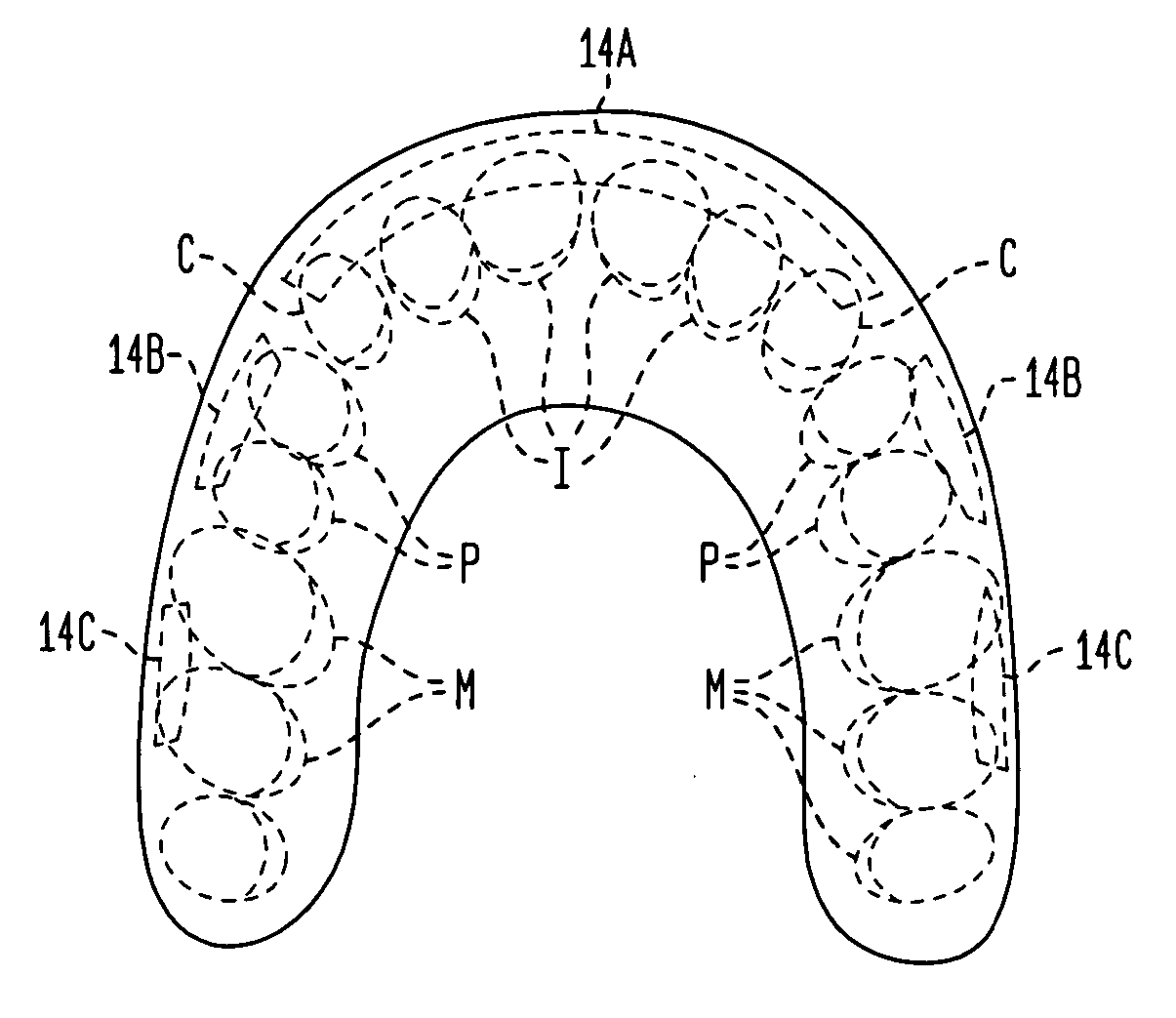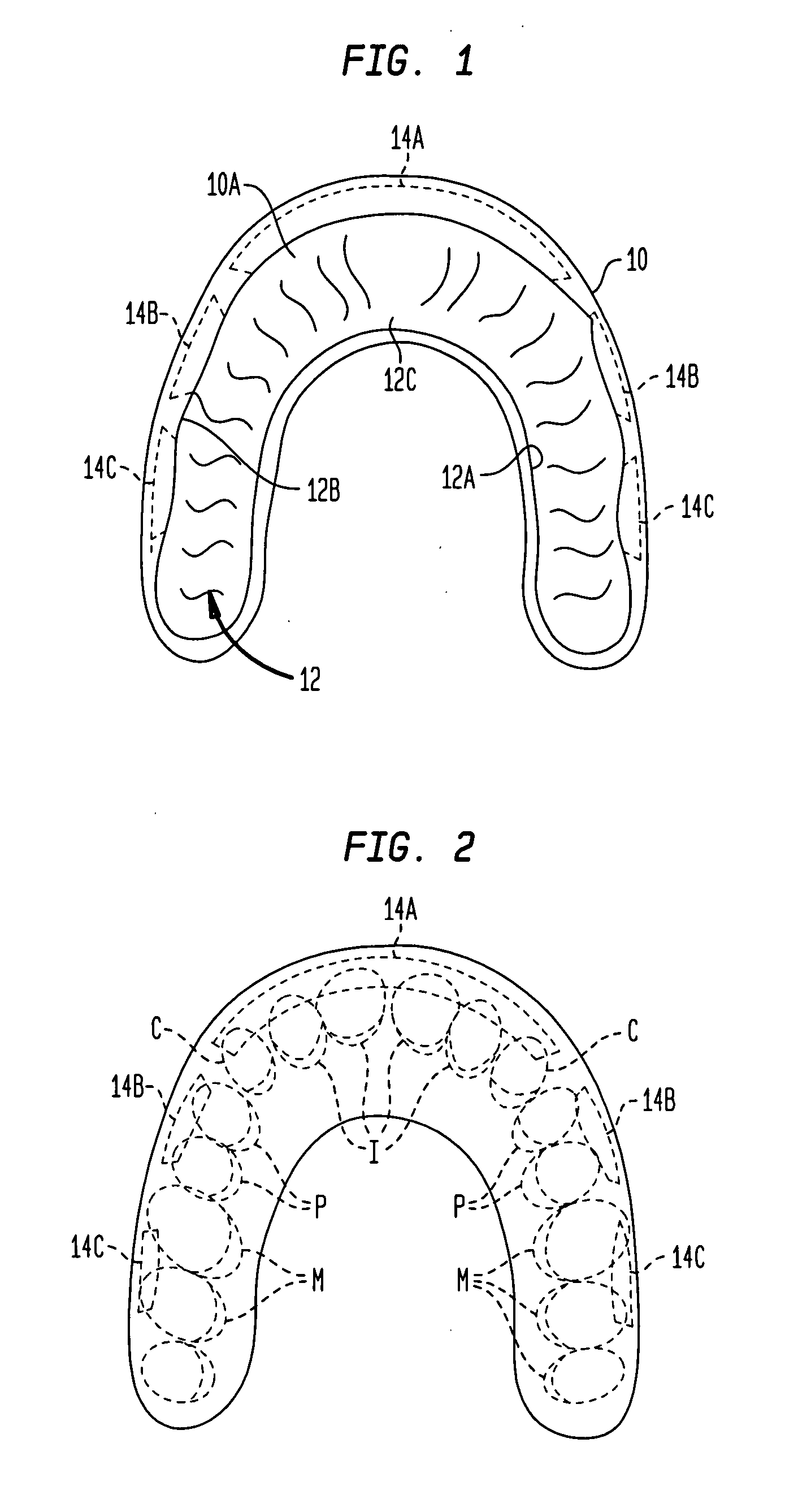Inserts for use with oral appliances
a technology for inserts and oral appliances, applied in the field of dental devices, can solve the problems of so as to achieve the effect of reducing the cost of use, reducing the risk of infection, and reducing the effectiveness of mouthguards
- Summary
- Abstract
- Description
- Claims
- Application Information
AI Technical Summary
Problems solved by technology
Method used
Image
Examples
Embodiment Construction
[0063] Referring to the drawings wherein like reference numerals refer to like elements, there is shown in the Figures an exemplary dental device 10 (FIGS. 1 and 2) and several embodiment insert cartridges or inserts, the insert depicted in FIGS. 3 and 4 being designated generally by reference numeral 20. Although an exemplary dental device 10 is shown in the Figures and discussed throughout, it is to be understood that the different inserts in accordance with the present invention may be tailored for use in conjunction with many different types of oral appliances. For example, other mouthguard designs similar in nature to that shown in FIGS. 1 and 2 may be utilized, as can teething rings, such as those disclosed in the '234 application, as well as other devices for use in the mouth. In addition, while several different embodiment insert cartridges or inserts (such as insert 20) are disclosed herein, it is to be understood that many different configurations, sizes and designs may be...
PUM
 Login to View More
Login to View More Abstract
Description
Claims
Application Information
 Login to View More
Login to View More - R&D
- Intellectual Property
- Life Sciences
- Materials
- Tech Scout
- Unparalleled Data Quality
- Higher Quality Content
- 60% Fewer Hallucinations
Browse by: Latest US Patents, China's latest patents, Technical Efficacy Thesaurus, Application Domain, Technology Topic, Popular Technical Reports.
© 2025 PatSnap. All rights reserved.Legal|Privacy policy|Modern Slavery Act Transparency Statement|Sitemap|About US| Contact US: help@patsnap.com



